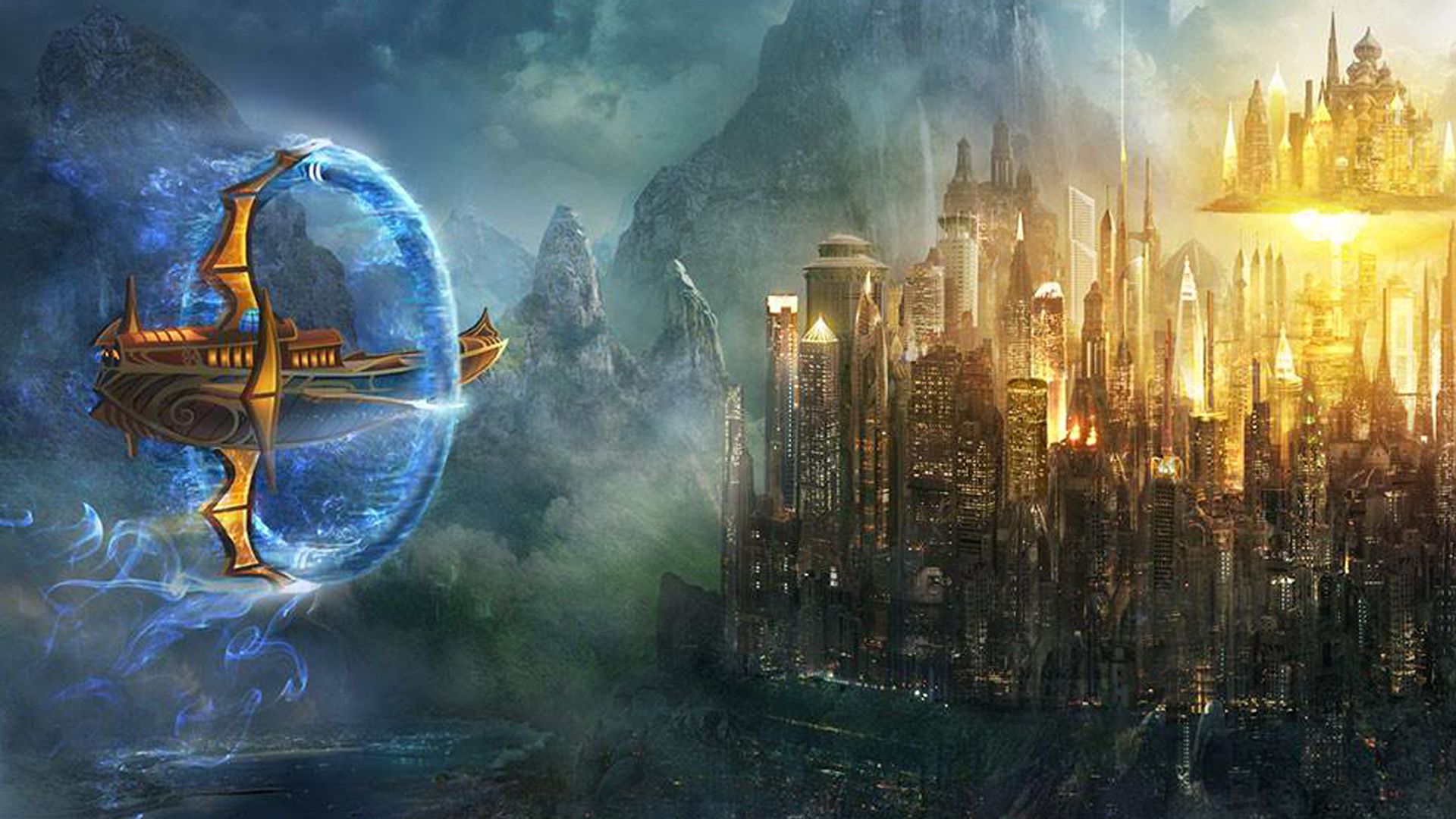Put up your swords and talk of peace, or hide behind your walls of stone. When the host of Valenar thunders forth, neither will save you.
— Shaeras Vadallia, High King of Valenar
Tens of thousands of years ago, the elves of the distant continent of Xen’drik rose up against the giants who ruled over them. This rebellion is the defining event in elf history. As the ancient war progressed, the magebreeders of the giants bound magic into the elves who remained loyal to them, forming the drow — assassins bred to prey on their other kin. Ultimately, the elves fled from Xen’drik and settled the island nation of Aerenal, where they split into two distinct cultures: the introspective Aereni and the warlike Tairnadal. Thus, a war nearly forty thousand years ago established the pattern of how elves live today.
Neither the Aereni nor the Tairnadal (which include the elves of Valenar) have much interest in human activities, but small numbers of elves have immigrated to Khorvaire over the centuries and have more or less integrated with the cultures of the Five Nations. The drow, though, are virtually unknown on Khorvaire.
As a whole, elves are driven by tradition and respect for the past. Where humans value innovation, elves strive to master and perfect the techniques of their ancestors over the course of studies lasting centuries. Elf society has changed little over the last five thousand years, while Khorvaire is constantly evolving.
The Aereni
For thousands of years, the island nation of Aerenal has been ruled and protected by the godlike power of the Undying Court, a council of undead high elves. The greatest heroes of the Aereni join the Undying Court after death, joining their heroic ancestors in immortality.
The Aereni are isolationists who have little interest in the world beyond their island. The Five Nations are a place of chaos and war, so why would any sensible elf venture into that madness?
The Tairnadal
Tairnadal elves dedicate themselves to the arts of war. The greatest heroes of the Tairnadal’s many wars — against giants, dragons, and the champions of Dhakaan — live on after death, becoming the patron ancestors of the Tairnadal. Upon reaching adulthood, a Tairnadal elf forms a bond with one of these ancestors and strives to follow in the footsteps of this ancestor, living as the patron did. In this way, the champion comes to embody their ancestor, allowing the dead to live on.
The Tairnadal have three distinct lines: the Draleus Tairn, the Silaes Tairn, and the Valaes Tairn. All three lines roam the northern plains of Aerenal, having left the forest long ago, but the Valaes Tairn now reside mostly in Valenar, being the Tairnadal most often encountered in Khorvaire. Despite sharing a homeland with the Aereni, the Tairnadal have distinct religious traditions, revering their patron ancestors rather than the Undying Court.
Elves of the Five Nations
Throughout history, elves have occasionally migrated to live among the other peoples of
Khorvaire. On rare occasions, entire families have relocated (as
House Phiarlan did, almost three thousand years ago), but more often wanderers and exiles have come to Khorvaire and made their way there. Many of the finest wizards and most renowned artisans in the Five Nations are high elves. Wood elves are found among the rangers and druids of the
Eldeen Reaches and stalking the darkest alleys of
Sharn.
Drow of Xen’drik
Long ago on the continent of Xen’drik, the first drow fought beside the giants against the other elves. Tens of thousands of years have passed, and drow and other elves remember each other only as figures in their legends. The Undying Court and the patron ancestors of the Tairnadal remember the drow, but they have little occasion to teach their living descendants about these shadows of the distant past.
When the elves fled to Aerenal, the drow remained on Xen’drik as subjects of the giants, and they were caught in the collapse of giant civilization. Today they linger on Xen’drik and have set their own course, free of the giants’ malevolent influence.
Three distinct drow cultures formed after the fall of the giants. The most numerous are the Vulkoori, hunters dedicated to a scorpion god called Vulkoor. They hunt giants and other dangers in their lands. Led by powerful druids and wizards, the Sulatar cling to traditions of elemental shaping that date back to the Age of Giants. They live in a handful of obsidian cities across Xen’drik, and believe that they are destined to cleanse the world in a fiery apocalypse. Finally, the Umbragen are descended from drow who fled into the depths of the earth when the giant civilization fell. They wield sophisticated magic in their unceasing battles against the daelkyr and the other aberrations of the underworld.
Elves and Dragonmarks
The Mark of Shadow first appeared among the elves of the
Phiarlan line, and the house quickly turned the mark’s powers of shadow and illusion into an economic dynasty. The suspicion of their kin drove them from Aerenal to Khorvaire, and the house splintered during the Last War, giving rise to House Thuranni. The two houses of shadow control the business of espionage throughout Khorvaire, but they also operate more legitimate ventures related to art and entertainment.
Phiarlan blood still runs among some of the Aereni elves, and the Mark of Shadow appears once or twice in each elven generation. Elves bearing this mark are always inducted into the elite force of the Cairdal Blades — an espionage agency in the service of Aerenal’s Sibling Kings.



Comments